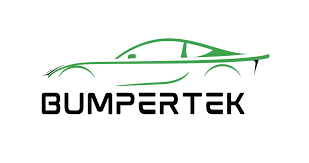When it comes to vehicle maintenance, few tasks are as straightforward and gratifying as bumper repairs Sydney. The bumper, a fundamental component of a car’s exterior, often bears the brunt of minor accidents, scratches, and dings. Despite its essential role in absorbing impacts and protecting the vehicle, repairing a bumper is often regarded as one of the easiest and quickest fixes one can undertake. This article delves into why bumper repairs are so manageable.
Understanding the Structure and Function of Bumpers
Bumpers are designed to absorb shock and minimise damage during low-speed collisions. They are typically made from plastic, fibreglass, or rubber, with a metal reinforcement bar inside for additional strength. The exterior, often coated with paint, is what most people see and what commonly gets damaged. Given their material composition and construction, bumpers are relatively easy to work with compared to other car parts.
Common Types of Bumper Damage
- Scratches and Scuffs: These are the most frequent issues, usually caused by minor brushes against other vehicles, walls, or debris.
- Dents and Dings: Small to medium-sized dents can occur from minor collisions or impacts with objects.
- Cracks and Splits: More severe than dents, these usually result from higher impact incidents but can still be repaired with the right tools and techniques.
Why Bumper Repairs Are Straightforward
- Accessibility: Bumpers are located at the front and rear of the car, making them easily accessible without needing to dismantle other components.
- Material Workability: The plastic or fibreglass used in bumpers can be heated, moulded, and reshaped relatively easily. These materials are also conducive to sanding and repainting, allowing for smooth, seamless repairs.
- DIY Potential: With the right guidance and tools, many bumper repairs can be handled at home. There are countless online tutorials and kits available that make the process understandable and manageable for car owners.
Step-by-Step Guide to Basic Bumper Repairs
- Assess the Damage:
Identify the type of damage your bumper has sustained. This will determine the materials and techniques needed for the repair.
- Gather Tools and Materials:
- For minor scratches and scuffs: You’ll need sandpaper, primer, paint, and a clear coat.
- For dents: Heat gun, plunger or dent puller, sandpaper, and paint.
- For cracks: Plastic welding kit or adhesive, sandpaper, primer, paint, and clear coat.
- Repairing Scratches and Scuffs:
- Clean the area thoroughly to remove any dirt or debris.
- Sand the scratched area to smooth it out and create a surface that the paint can adhere to.
- Apply primer to the sanded area and let it dry.
- Paint the area, matching the car’s colour, and allow it to dry completely.
- Apply a clear coat to seal the paint and provide a glossy finish.
- Fixing Dents:
- Heat the dented area with a heat gun to make the plastic more pliable.
- Use a plunger or a dent puller to gently pull out the dent.
- Once the dent is removed, sand the area to smooth out any rough edges.
- Paint and apply a clear coat as needed.
- Repairing Cracks:
Clean the area around the crack thoroughly.
- Use a plastic welding kit or adhesive to fuse the crack back together.
- Sand the repaired area to smooth it out.
- Apply primer, paint, and a clear coat to finish the repair.
Professional vs. DIY Repairs
While DIY repairs can be rewarding and cost-effective, certain situations might require professional intervention. Severe damage, extensive cracks, or if the bumper’s structural integrity is compromised, it’s advisable to seek a professional’s expertise. Professionals have the necessary tools, materials, and experience to ensure the bumper is repaired to a high standard.
Summing up, bumper repairs Sydney stand out as one of the easiest and fastest fixes on any car part due to their accessibility, material workability, and the straightforward nature of the damage they typically incur.

